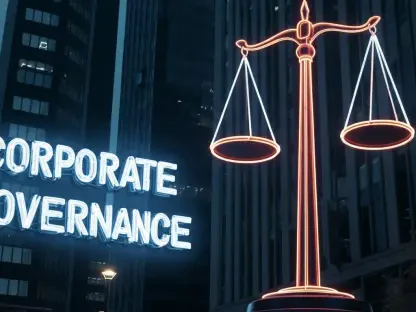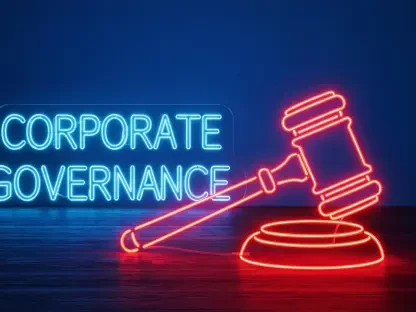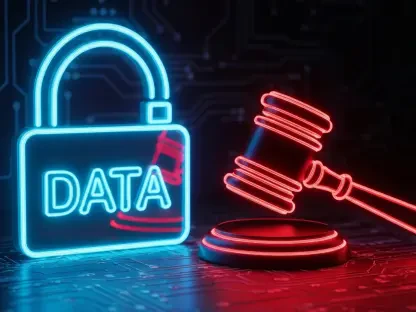Across the legal industry, the embrace of artificial intelligence in e-discovery has moved from novelty to necessity. Law firms and corporate legal teams are deploying AI-driven tools – from predictive coding engines to generative AI summarizers – to tame the ever-growing flood of emails, chats, and documents in litigation. In fact, a recent industry survey found that enterprise adoption of AI in e-discovery nearly doubled in a year.
Document review has emerged as the number one opportunity for AI use by legal departments, signaling how integral these technologies have become in modern case workflows. Yet as this AI revolution accelerates, it also raises a pressing question: can these tools be trusted and verified under legal scrutiny? The answer lies in confronting three intertwined challenges – defensibility, bias, and benchmarks – with the transparency and rigor that a justice system demands.
Defensibility: Standing Up to Courtroom Scrutiny
In e-discovery, defensibility means an AI tool and its results can withstand the microscope of litigation. It’s not enough for an algorithm to quickly sort millions of files; legal teams must be prepared to justify their process to a judge or opposing counsel. One vivid illustration comes from the first landmark case approving predictive coding, Da Silva Moore v. Publicis Groupe (2012). That decision a decade ago signaled that computer-assisted review is acceptable in discovery, but it also emphasized that it’s no “magic easy-button” – parties still had to design reasonable, quality-controlled workflows. In the years since, courts have broadly accepted AI-assisted discovery, and disputes tend to focus on how the AI was used and how transparent the process was, rather than whether it should be used at all. This evolution reflects a key principle: the producing party is best situated to choose its discovery methods, as long as those methods are reasonable and defensible.
But what does defensibility look like in practice when AI is involved? In a word: documentation. Legal teams must maintain an audit trail that shows how the AI tool was trained, validated, and deployed. For example, if an AI model tagged certain documents as non-responsive, could you explain the steps behind that decision? Being able to repeat the process (or at least demonstrate its consistency) is paramount. If challenged, a producing party should be ready to show that its AI workflow was reasonable, proportionate, and in line with e-discovery best practices. Often this means supplementing the AI with human oversight and statistical measurements (like precision and recall rates) to validate that the machine’s performance meets legal standards. While parties are not always obliged to disclose these internal metrics absent a dispute, having them in your back pocket adds a layer of protection.
Of course, there may be cases where an adversary or court does demand a closer look under the hood. In a worst-case scenario, a skeptical opposing counsel might seek full transparency into the AI’s inner workings – from the prompts given to a generative AI reviewer, to the algorithm’s training data, to the criteria used to classify documents. Hints of this are already being seen in contentious litigations: for instance, lawyers have debated whether AI-generated document summaries or privilege logs should require disclosure of the prompts or rules used, on the theory that these inputs could bias the outcome. While such deep dives are still rare, the mere possibility underscores why vendors and legal teams must build explainability into their AI tools. If a judge asked you to explain why the AI missed a particular email, would you have an answer? As a safeguard, some organizations are adopting formal AI risk management frameworks (such as the National Institute of Standards and Technology) that yield “documented, defensible processes” for AI use. The end goal is an AI-assisted discovery process that can confidently stand up in court.
Bias: Demanding Fairness from Algorithms
Hand-in-hand with defensibility is the mandate to confront bias in AI. Legal discovery is predicated on fairness and thoroughness; an algorithm that systematically overlooks or misclassifies certain types of information can undermine both. The risk isn’t hypothetical. AI systems are only as good as the data and rules humans give them, and biases – whether unintentional or historical – can creep in at many stages. In the context of e-discovery, imagine a scenario where an AI model was trained mostly on emails from one corporate department. It might perform well on that familiar jargon, yet fumble when encountering communications from a different department with a different vernacular. The result? Relevant documents could be under-ranked or missed entirely due to a blind spot in the training data – a bias by omission. Bias can also arise if the algorithm’s developers didn’t account for diversity in language, culture, or even file types. These are not far-fetched “what ifs;” they are real concerns that savvy legal teams are already raising with their vendors.
The first step is understanding that not all bias is nefarious, but all bias needs managing. AI researchers often distinguish between necessary biases (like the statistical weighting that allows an AI to make useful predictions) and harmful biases that distort outcomes. As a recent paper by attorneys Tara Emory and Maura Grossman highlights, recognizing the type of bias at play is foundational to effective governance of AI in legal practice. For legal teams, this means probing your AI tools with tough questions. What data was the model trained on, and does it reflect the variety of data in your matter? Has the vendor tested for biases – for example, ensuring that the AI’s relevancy rankings don’t consistently favor one custodian or one side of a case? If an AI is flagging privilege or performing sentiment analysis, what steps were taken to prevent sensitive attributes (like gender or race of authors) from skewing the results? Vendors should be able to answer these questions. Transparency from providers is key.
Encouragingly, the broader regulatory winds are pushing for fairness. In late 2024, the White House issued an Executive Order on AI that effectively declares that responsible, bias-mitigating AI will no longer be optional. For e-discovery practitioners, this means that demonstrating due diligence against algorithmic bias isn’t just good ethics – it’s fast becoming a legal expectation. This might involve running sample tests (for example, seeding the AI with hypotheticals to see if it favors certain outcomes) or insisting on diverse development and testing data. It also means keeping a human in the loop. By demanding transparency and accountability from AI tools, legal professionals act as a crucial check to ensure technology doesn’t inadvertently tip the scales of justice.
Benchmarks: Navigating the Wild West of Legal AI
If defensibility and bias are the challenges within an AI tool, the issue of benchmarks is a challenge around it. How do you know if an AI e-discovery tool is any good in the first place? In most industries, standards and benchmarks guide buyers – think of crash tests for cars or ISO standards for software. In legal AI, however, no universally accepted benchmarks or rating system exists for evaluating the effectiveness of these tools. This lack of standards leaves legal teams in a bind. When every vendor in the market claims their algorithm is the secret sauce to review documents 50% faster with 95% accuracy, how do you separate genuine capability from marketing fluff? For now, firms often rely on word-of-mouth, limited bake-off tests, or the vendor’s own representations – none of which fully substitute for objective benchmarks.
The difficulty of benchmarking legal AI was a hot topic at the Law Librarians’ Annual Conference in mid-2025. Experts there noted that, unlike benchmarking a smartphone’s battery life or a CPU’s speed, measuring a legal AI tool is profoundly complex. After all, what’s the “correct answer” in a legal context? Reasonable minds (or algorithms) might differ on which documents are relevant or how a query should be interpreted. Despite these hurdles, the legal community has started some grassroots benchmarking efforts. Without independent benchmarks, building trust in AI tools becomes an uphill battle. Corporate legal departments and outside counsel must invest time in pilot projects or limited-scope trials to vet a tool’s claims. Some forward-thinking collaborations are trying to fill the gap – the Verification and Assessment of Legal Solutions initiative recently partnered with law firms to evaluate AI across real-world tasks, providing a rare neutral yardstick for performance. Still, such efforts are the exception. The absence of industry-wide standards has practical consequences in procurement and practice. Legal teams may hesitate to adopt innovative tools without a “Good Housekeeping seal” to reassure them, slowing down innovation’s diffusion. Those that do forge ahead often do so on faith and vendor reputation, which can backfire if a tool underperforms at a critical moment. Indeed, surveys indicate a persistent cautiousness – even at firms that have purchased AI software, only about 10% of attorneys actively use it, with many others feeling “they can’t rely on it” yet. This trust gap will only be bridged when the industry develops credible benchmarks and transparency norms. Until that day, law firms and departments must do the next best thing: insist on detailed case studies, ask for client references, conduct their own tests, and closely monitor outcomes. In the court of technology, as in court itself, evidence is king – and the onus is on AI providers to supply it.
The Way Forward
The rise of AI in e-discovery is often described in almost revolutionary terms, promising faster, cheaper, maybe even better justice. There is truth in the promise: Done right, AI can rapidly cull irrelevant data, surface hidden connections, and relieve humans from drudgery so they can focus on strategy. But realizing that promise requires a human-guided, principled approach. As you’ve explored, defensibility, bias, and benchmarks are pillars of trust. Without defensibility, an AI’s outputs collapse under scrutiny; without vigilance against bias, the technology could inadvertently perpetuate the very injustices it is designed to prevent; and without benchmarks, confidence in AI tools will remain tepid and tentative.
The encouraging news is that the legal community is beginning to tackle these issues head-on, baking transparency into tool design, rigorously testing for and mitigating bias, and rallying around the development of standards.
E-discovery has always sat at the intersection of law and technology. In that respect, the AI surge is simply the latest chapter in a long story of innovation in the service of justice. What will define this chapter is how responsibly you write it. If you choose to prioritize accountability, fairness, and verifiability now, you ensure that AI becomes a trusted ally in the pursuit of truth.
The sooner AI is held to the same standards of excellence demanded of humans, the sooner technology’s promise to elevate rather than erode the integrity of discovery and the justice it serves will be fulfilled.









